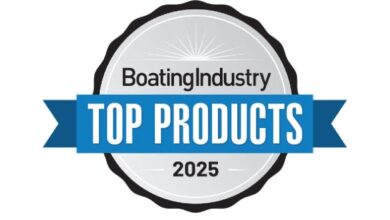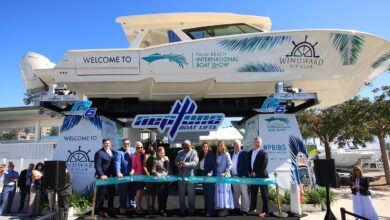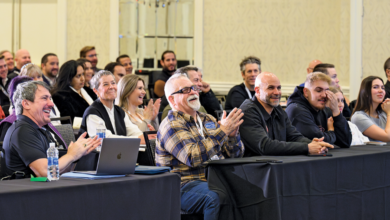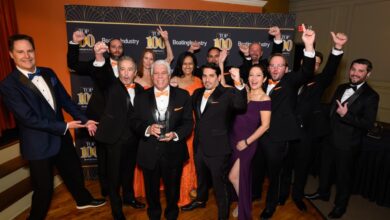The 2017 Top 100 Dealers

Now in its 13th year, the Boating Industry Top 100 program finds the dealers on the list to be more successful than they have ever been.
The Top 100 and Hall of Fame dealers topped $3 billion in revenue for the first time in the history of the program, achieving revenue of more than $3.1 billion in 2016. Total revenue for this elite group was nearly $400 million higher than last year’s list.
With that growth also came an increasingly tough competition to make the list, as plenty of good companies did not make the cut for 2017. From thousands of dealers and hundreds of nominations, this year’s Top 100 has emerged.
As a group, the Top 100 sold 28,953 boats in 2016, a 7 percent increase from 2015. They sold nearly 6,000 engines, a 17 percent jump.
At the same time, they grew net profit and margins, and added employees.
On the following pages, you’ll find key benchmarks and stats for this year’s Top 100, as well as best practices from the Top 100 in marketing, management, service and more.
We also have a profile of the 2017 Boating Industry Top 100 Dealer of the Year – OneWater Marine, with their second win – plus Best in Class winners, Editors’ Choice companies and our Hall of Fame companies. Finally, we’ve ranked the Top 20, with the remaining 80 companies listed in alphabetical order. Click here to view the full list.
 Best Practices of the Top 100
Best Practices of the Top 100
What makes the dealers on the Top 100 different from the other dealers in North America?
It’s not just about selling more boats than the competition. While many of the Top 100 and Hall of Fame are among the largest dealers in North America, it’s also about demonstrating business acumen, delivering great service, demonstrating creative marketing and focusing on constant improvement. Their dedication to improving the boating experience helps improve the entire industry.
These are some of the best practices that have helped this year’s Top 100 and Hall of Fame achieve more than $3.1 billion in total revenue. For more best practices and tips, be sure to read the Best in Class profiles by clicking here.
The Ultimate Flounder Pounder
With the success and history of the White Marlin fishing tournament in nearby Ocean City, Md., Short’s Marine wanted a way to create a fishing tournament that would appeal to anglers who match up well with the boating products the dealership sells.
To achieve that goal, Short’s partnered with another local business to create the largest flounder fishing tournament in the world — The Ultimate Flounder Pounder.
“It was an incredible success in its first year,” says company President Donald Short. “We had over 200 boats participate and gave away $100,000 in cash and prizes.”
For 2017, prizes were increased to $200,000.
The tournament attracted anglers and generated media coverage for the dealership, including a three-minute feature on the local CBS television affiliate.
“The great thing for Short’s Marine is that the Flounder Pounder gave us another venue to showcase product for our target market,” Short says. “At the same time it enabled us to continue to feed our perception in the market that we are ‘the’ boat dealer in our area. By having the world’s largest flounder tournament, we are attached to something that will continue to grow in a big way. We always want to be perceived as a leader in our community and this is a perfect fit to help us do so.”
Know your trades
Parks Marina is one of the best dealers in the Top 100 at turning inventory, both used and new.
The key to managing used inventory is to constantly be aware of what types of boats customers are looking for and buying or trading for them at the right price, says CFO Darren Anderson.
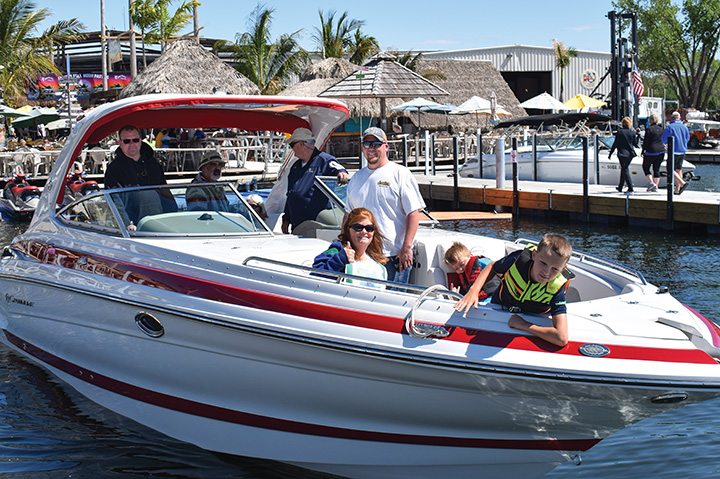
“Often a traded boat is sold almost simultaneously with the new one, because our salesmen know what our customers want and can identify which boat an interested lead might be looking for while selling the new one,” Anderson says. “In doing this we avoid having to ‘get out from under’ a boat we purchased at the wrong price.”
Parks has also created several tools to help inform its boat buyers about the key things to consider during the boat buying process.
The printed “Boat Buyers Guide” lets customers know “What you need to know BEFORE you buy the boat” and has been used on the show floor, in weekly e-mails and on the company’s website. Parks also created a three-part YouTube series on the subject.
Going international
For the past two years, Miami Nautique International has focused on product introduction and education to create a global market for boat sales.
“We continued to place a strong emphasis on our international sales, and the South American Market,” says owner Kimberly Laursen. “Internationally, our mission is in creating, maintaining, and gaining market share.”
In 2016, the company carefully analyzed each country based upon political and economic stability, as well as importation bureaucracy in an ever-evolving market.
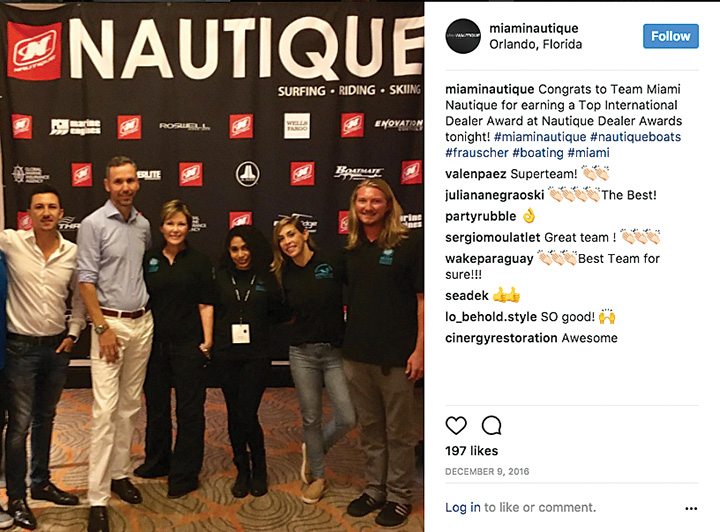
“We continued supporting our representatives in each country,” Laursen says. “We made certain to educate our representatives on the new model year products, so they can be a valuable native liaison to answer questions, show boats, and professionally represent Miami Nautique. Due to our tremendous effort in these territories, we can proudly say that in 2016, Nautique maintains a majority market share in every country for the third consecutive year.”
Culture matters
Creating a culture – and executing on that culture – are what helps WakeSide Marine stand out from its competition, says President Jeff Haradine.
“Culture shines through to the customer at a very deep and personal level,” Haradine says. “Our culture at WakeSide empowers employees, which allows the team to connect with the customer on a completely different level. The customers actually become family, not just customers!”
Boating is a unique market that allows dealers to create dreams.
“There is no need to sell lifestyle when it comes naturally because we all enjoy it,” Haradine says. “This is what connects us to our customers and why they like us. It is obvious we care about them, we are fun to do business with and we pay attention to their needs. It is a powerful force that drives the relationships that make the business successful.”
Execution is the key, where “the rubber hits the road,” if you will.
“This can be difficult to accomplish,” Haradine says. “It takes dedication, focus and often times mental toughness to take the extra step when you’re tired or frustrated. Execution is also a willingness to trust the business systems, break them when they don’t work and rebuild them so that they work in our favor. Execution is willingness, by a team member, to expect results from each other and deliver them in return to the customer and to the team members relying on you.”
Customer service transformation
As Boaters Exchange looks to continue growing and improving, it has looked to transforming its marketing and customer service efforts.
For 2016, this involved the recruitment of a Director of Sales and Marketing, a new position that also oversees customer service and looks for ways to make it better.
Creating a service-driven environment has enabled Boaters Exchange to maximize the satisfaction of our customers,” says Vice President of Sales Paul Berube. “We maintain that the customer is the sole purpose for being in business. We continue to strive for perfection in customer service everyday. With the focus on the customer, much of the boat-buying anxiety is minimized, before, during, and especially after the sale.”
All of the dealership’s CSI data and customer satisfaction information is funneled into the director of sales and marketing, who has the responsibility of passing action items to the appropriate sales or service person.
“We also conduct follow-up calls (as per certified dealer guidelines) and document unhappy customer opportunities. One of our owners follows-up directly to map a resolution plan that the customer will appreciate,” Berube says.
Part of the Boaters Exchange delivery process includes the conversation regarding CSI surveys.
“We personally ask the customer to let us know if they are not comfortable giving us their highest rating,” he says. “In this way the customer is invited to let us know of issues or items we may have overlooked. We have discovered that some customers do not want to be a bother to us and so therefore, may not call. The invitation to call and the follow-up call system helps circumvent those situations.”
CRM across multiple locations
With seven locations in Florida and the Midwest, coordinating CRM and other systems is paramount to success for The Boat House Group.
“In an increasing competitive marketplace, it is critical to increase the way you reach your customer and increase the frequency of communication,” says Trent TerHaar, national marketing director. “We have effectively utilized our CRM to accomplish that objective along with managing all leads that come into the company.”
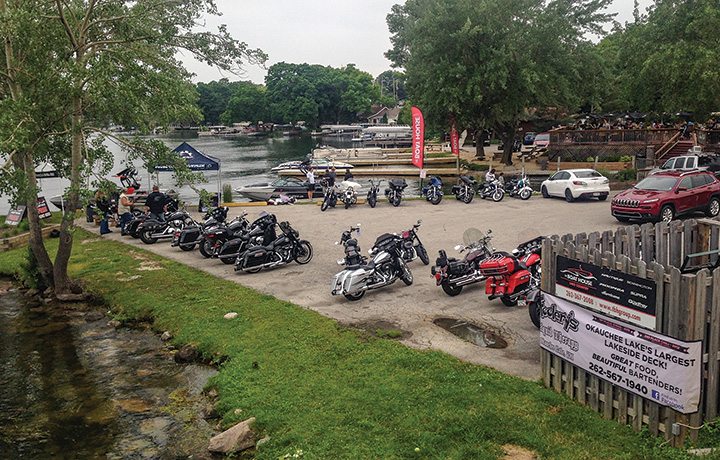
Leads are immediately distributed by the system and the sales rep must follow up within a limited period of time. All activities are logged and electronically stamped so management can track the progress of a lead or potential sales through the system. Reps are required to log all activities with their customers.
“Maintaining records and data on tens of thousands of customers, we can track buying habits and effectively stay on top of opportunities when customers want to trade or upgrade their existing boat,” TerHaar says. “Combined with our boat show sales process, sales have increased at a healthy rate due to a more efficient and effective way to reach the customer and has allowed our sales effort to become proactive instead of waiting on customers to come through our doors.”
The Boat House Group has also focused on a process to contribute to sales success across its seven locations. Weekly sales meetings address sales as it relates to budget shortfalls or overages, by location and by individual. Each salesperson reviews their pipeline and progress toward meeting their respective sales quotas.
Used inventory and new trade units are also discussed so that everyone is aware of new sale opportunities and each meeting contains a product training session led by the Product/Brand Champion, keeping everyone up to date on recent events or changes.
“Communication between our North and South locations have also improved due to technology as we will often move inventory between locations in order to control inventory costs and move boats to locations that improve the possibility of a faster and more profitable sale,” TerHaar says.
Gathering customer feedback
For The Boat Shop, the focus for 2016 was to find ways to increase efficiency and profitability in every facet of its business. As a key part of accomplishing this, the dealership gathered its staff and surveyed its customers to create a better customer experience.
“We sat down to interview each and every staff member and asked them their opinions on our facilities, other staff members, and new ideas,” says President Roy Finney Jr. “We also sent out a random mailing to a group of 50 customers. We asked these customers to sit down and talk with us, and in return offered them a discount coupon for their winterization service.”
Through the combination of these meetings, both with the staff and the 17 customers who came in, The Boat Shop ended up undertaking several improvements, including reducing its brand offerings, making staff changes and implementing new employee policies.
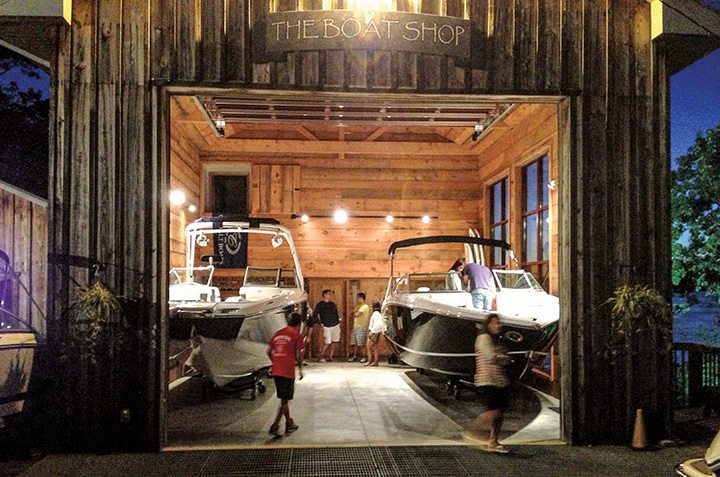
The company implemented a new attendance policy that has higher penalties for tardiness.
“This was done through the input of our staff and to give a few team members who are strong workers, but lack time management a better incentive to arriving on time,” Finney says.
New training opportunities are designed to ensure that employees don’t overlook the basics.
“We set aside two full days in April, just prior to our opening full time for team training and covered things such as conflict resolution, customer correspondence, basic greetings, and also reviewed our mission statement, corporate policies, and goals so we all started the season on the same page,” Finney says. “This helped with both employee morale and customer satisfaction throughout our business.
Service offerings were updated and streamlined with new recommended work menus.
“This includes often overlooked maintenance such as zinc replacement, repairing outdrive corrosion, prop reconditioning, etc.,” Finney says. “Along with this we are implementing new spring and fall menus that will have more choices for our customers, but also allow us to allocate work when our shop is slow.”

